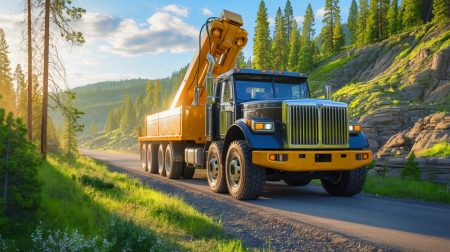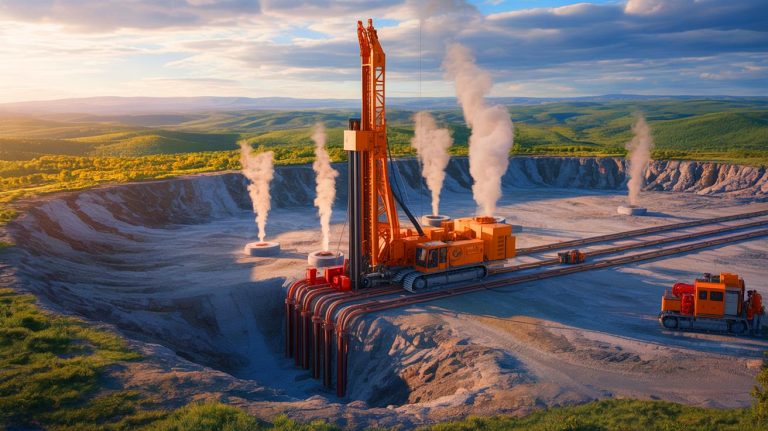| IN A NUTSHELL |
|
The quest for sustainable energy has taken humanity to new depths, quite literally. As the world grapples with the limitations of traditional energy sources and the urgent need to reduce carbon footprints, ultra-deep geothermal energy emerges as a promising solution. By harnessing the heat from Earth’s core, scientists and engineers aim to unlock a near-limitless, always-on energy source. With advancements in drilling technology and innovative approaches, this form of energy has the potential to revolutionize the energy sector and significantly reduce dependency on fossil fuels.
Why Deep Geothermal Matters Now
In the current energy landscape, wind, solar, and batteries are rapidly expanding yet still make up only a small fraction of the global energy supply, which is predominantly fueled by coal, oil, and gas. As global energy demand continues to rise, geothermal energy presents a dense and continuous resource capable of providing substantial power without carbon emissions or radioactive waste. The International Renewable Energy Agency estimates that the technically recoverable geothermal potential could exceed the current world electricity demand by a factor of ten, highlighting its immense potential.
Unlike intermittent renewables, geothermal energy offers a stable supply due to its continuous regeneration in Earth’s mantle and crust. However, reaching these deep resources quickly and cost-effectively is crucial. Advances in drilling technology, such as microwave drills and shale-style fracking, are paving the way to access these untapped resources, promising to shoulder a significant portion of the world’s energy needs.
The Unforgiving Physics of Going Ultra-Deep
Drilling into the depths of the Earth is no small feat. As depth increases, so do the challenges. Each kilometer drilled adds approximately 3,625 psi of pressure and significant heat. While shallow rock behaves like brittle glass, deeper layers act like pliable fudge, presenting substantial obstacles to maintaining open boreholes. Drill strings can buckle under their own weight, and bits wear out rapidly, requiring innovative solutions to overcome these hurdles.
Traditional drilling rigs, while effective for oil extraction at shallower depths, slow down significantly beyond six miles. This limitation was evident in the Soviet Kola Superdeep project, which took decades to complete. Furthermore, extreme temperatures wreak havoc on electronics and elastomers, challenging conventional down-hole telemetry. Overcoming these constraints is essential for the success of next-generation geothermal systems, which aim to operate in the super-hot 572 °F to 932 °F range.
Supercritical Water: A Ten-Fold Power Boost
At temperatures above 703 °F and pressures exceeding 3,191 psi, water enters a supercritical phase, boasting an energy density far superior to that of either liquid or gas. This state allows geothermal plants to potentially increase their output tenfold, delivering power on par with nuclear plants from a much smaller footprint. The enthalpy of supercritical water at these conditions is nearly double that of steam at 392 °F, significantly reducing the flow rate and pumping energy required for power generation.
Such advancements can drastically enhance the efficiency and capacity of geothermal plants, making them viable competitors to traditional energy sources. By harnessing supercritical water, geothermal energy could not only meet but exceed the power output of conventional plants, all while maintaining a smaller environmental footprint and minimal emissions.
Microwaves, Not Drill Bits
In a bid to overcome the limitations of traditional drilling methods, Texas-based Quaise Energy is pioneering the use of electromagnetic waves for rock fracturing. Their innovative approach utilizes a three-inch metal waveguide to deliver up to a megawatt of microwave energy directly to the rock face, vaporizing granite and basalt without physical contact. This method eliminates the need for frequent bit replacements, reducing costly rig downtime and improving the economics of ultra-deep wells.
Quaise has successfully plasma-tested its system at Sandia National Laboratories and aims to demonstrate a three-mile deep well by 2026, with plans for a 100-megawatt pilot plant by 2030. This breakthrough technology promises to reshape the geothermal landscape, offering a more efficient and cost-effective solution for accessing deep geothermal resources and making ultra-deep drilling feasible on a large scale.
Horizontal Fracking, Geothermal Style
Borrowing techniques from the shale-gas industry, Fervo Energy is adapting horizontal drilling for geothermal applications. By drilling intersecting horizontal wells at depths of approximately 8,200 feet, Fervo creates a stimulated fracture network using high-pressure water. This network allows for fluid circulation via the thermosiphon effect, which requires no pumps, leveraging the natural density difference between cold and hot water.
Early pilot projects in Nevada have achieved 3.5 megawatts, and a 752 °F test in Utah aims for 90 megawatts, sufficient to power over 400,000 homes. Fervo’s approach utilizes existing oil-field rigs, enabling rapid replication of geothermal plants across regions with hot crust, potentially covering 70 percent of the continental United States. This method holds the promise of widespread geothermal adoption, unlocking vast energy potential while minimizing environmental impact.
Closed-Loop Radiators and Hybrid Systems
Innovative startups are exploring sealed down-hole radiators, where the working fluid remains isolated from rock contact, preventing mineral scaling that can clog open systems. Some are experimenting with combining geothermal brines with supercritical carbon dioxide, which enhances flow while sequestering carbon dioxide underground. Hybrid plants could even repurpose existing coal station infrastructure, replacing coal burners with geothermal heat exchangers and utilizing existing turbines and cooling towers.
This hybrid approach offers a seamless transition from fossil fuels to renewable energy, leveraging existing assets while reducing emissions. By incorporating geothermal energy into existing systems, these startups are pioneering a sustainable path towards a cleaner energy future.
As the world moves towards a sustainable energy future, ultra-deep geothermal energy stands out as a formidable contender. With advancements in drilling technology and innovative approaches, geothermal energy has the potential to provide stable, abundant power without the drawbacks of traditional energy sources. However, challenges remain, from managing induced seismicity to ensuring cost-effective drilling success. As technology progresses, will geothermal energy become the cornerstone of our renewable energy future?
Did you like it? 4.6/5 (24)











Wow, tapping the Earth’s core for energy sounds like something out of a sci-fi novel! 🌍
How much will this cost compared to traditional energy sources? 🤔
Microwave drilling? Sounds like my microwave at home is getting an upgrade! 😂
Isn’t there a risk of earthquakes with all this deep drilling?
Thank you for such an insightful article! This tech really gives me hope for a sustainable future. 🌱
Supercritical water? That sounds like some superhero stuff. What’s next, geothermal laser beams? 😆
Can this technology be implemented everywhere, or only in certain areas?
Horizontal fracking for geothermal energy sounds promising. What are the environmental impacts?
How soon can we expect to see these geothermal plants providing energy to homes and businesses?
It seems like a game changer, but what about the upfront investment? 💸
Microwave drilling? So we’re basically cooking the Earth from the inside out? 🍳